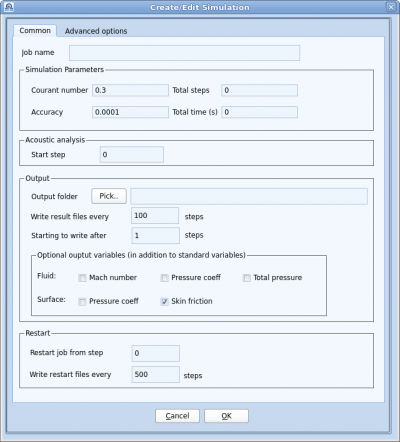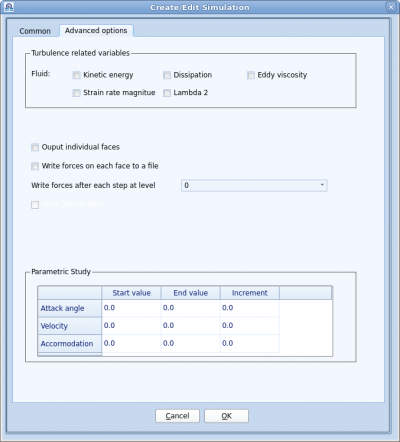Difference between revisions of "Creating Job"
From Alta Dynamics Knowledge Center
| Line 6: | Line 6: | ||
:Courant number | :Courant number | ||
::Similar to most transient analysis software, Courant number is directly proportional to the timestep size. A small Courant number will improve stability, but would require more increments to reach a desired solution. Users shall experiment with Courant number for new simulations to find the optimal value for both stability and efficiency. | ::Similar to most transient analysis software, Courant number is directly proportional to the timestep size. A small Courant number will improve stability, but would require more increments to reach a desired solution. Users shall experiment with Courant number for new simulations to find the optimal value for both stability and efficiency. | ||
| + | |||
| + | :Total steps | ||
| + | ::This input controls the total number of increments the simulation will run, regardless of timestep size. Simulation completes after the total number of steps is reached. Set this input to 0 to disable it. | ||
| + | |||
| + | :Total time | ||
| + | ::This input controls the total physical time for the simulation, regardless of total steps. Enter 0 to disable. When both "Total steps" and "Total time" are given, simulation completes when one of them is reached. | ||
| + | |||
| + | :Acoustic analysis | ||
| + | ::Enter the starting step for acoustic analysis, 0 to disable acoustic analysis. Typically acoustic analysis starts after the simulation has reached a relatively stable state, i.e. all initial transient effects have been dissipated. | ||
=Request output= | =Request output= | ||
Revision as of 21:20, 20 May 2015
To define a simulation, namely a job, click on the "Create" button to open the following dialog.
Simulation parameters
- Courant number
- Similar to most transient analysis software, Courant number is directly proportional to the timestep size. A small Courant number will improve stability, but would require more increments to reach a desired solution. Users shall experiment with Courant number for new simulations to find the optimal value for both stability and efficiency.
- Total steps
- This input controls the total number of increments the simulation will run, regardless of timestep size. Simulation completes after the total number of steps is reached. Set this input to 0 to disable it.
- Total time
- This input controls the total physical time for the simulation, regardless of total steps. Enter 0 to disable. When both "Total steps" and "Total time" are given, simulation completes when one of them is reached.
- Acoustic analysis
- Enter the starting step for acoustic analysis, 0 to disable acoustic analysis. Typically acoustic analysis starts after the simulation has reached a relatively stable state, i.e. all initial transient effects have been dissipated.

